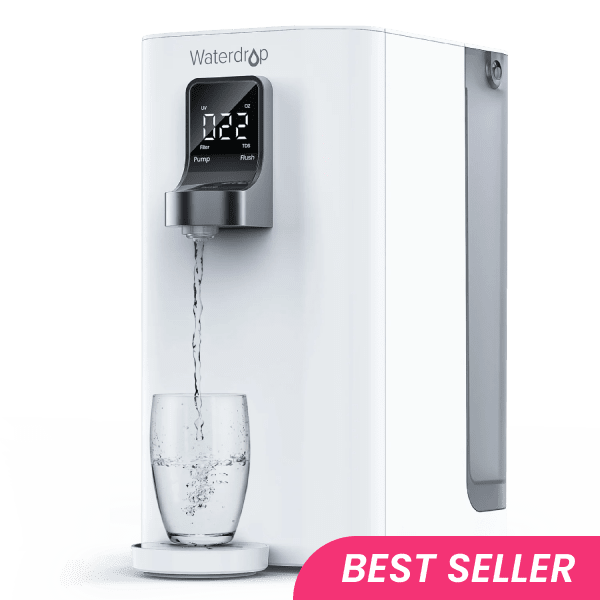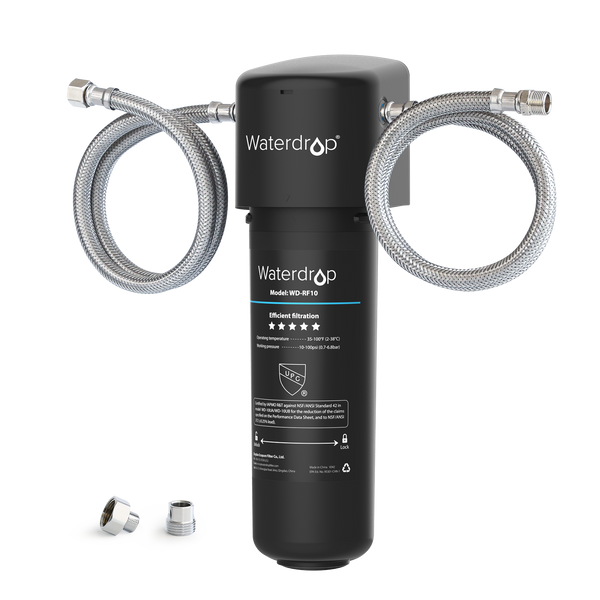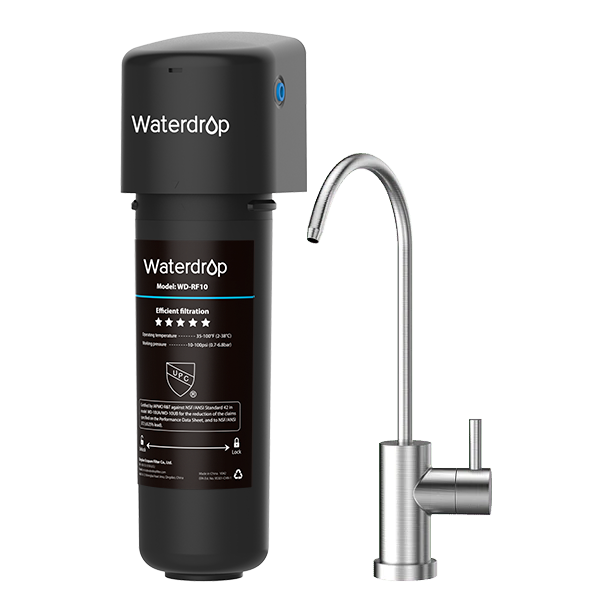All You Need To Know About Activated Carbon For Water Filtration
by Dr. Jonathan Doyle - Updated July 22, 2021
Activated carbon has found diverse applications in almost every aspect of human life. From cosmetics to medicine and agriculture, we have used activated carbon to achieve different effects. Furthermore, activated carbon is considered a crucial component of water filters in the water purification industry.
This blog discusses activated carbon at length, especially what it is and how it works.
Activated Carbon Explained
Activated carbon comes from the carbonaceous source material, including coal, coconut shell, bamboo, wood, etc. Unlike ordinary carbon, activated carbon has small, low-volume pores that help to increase its surface area. The processing of raw carbon to get activated carbon involves treatment with hot gases. The hot gas removes the impurities in the raw carbon and also activates it.
How Activated Carbon Works
The effectiveness of activated carbon can be majorly attributed to its very large surface area. That is why it can efficiently filter out contaminants through physical absorption. The contaminants in polluted water are attracted to the surface of the carbon, where they store up in the micron gap. Carbon filters are often referred to as a parking lot because of these pores, which serve as parking spaces for contaminants when the polluted water flows through them. The size of the pore determines the level of filtration – the smallest pores ensure the finest filtration. Likewise, the amount of time the water stays in contact with the activated carbon surface affects the filtration. The longer the time, the finer the filtration. That is why the best filtration performance is achieved using smaller activated carbon filters coupled with low pressure.
Micron rating also affects the filtration effect because it determines the size of contaminants that will pass through the filter. The range of the pore sizes in activated carbon block is between 0.5 microns to 10 microns. However, it is equally important that the pore size is not too small; otherwise, water molecules may not pass through properly. That is why the best pore size ranges between 1 micron to 5 microns.
The Filtration Performance of Activated Carbon Filters
Activated carbon can effectively reduce contaminants like pesticides, bacteria, suspended solids, heavy metals, and more in water. The overall effectiveness depends on the quality of the activated carbon used in the filter. However, almost all activated carbon filters can reduce chlorine, irrespective of quality. Chlorine and chloramine contaminate water during filtration at the municipal plant, and they are responsible for the unusual taste and odor in water.
Herbicides, pesticides, and even chlorine all have adverse effects on our health. However, activated carbon has been tested and confirmed to be effective against the 14 most common pesticides in water. These include Lindane, Heptachlor, Glyphosate (Round-up), Chlordecone (CLD/Kepone), and Chlordane. Activated carbon also reduces 12 of the most common herbicides in water, including Atrazine and 2,4-D.
Activated Carbon Forms
There are various forms of activated carbon, each with specific filtration performances. While we have up to 150 variants, this blog section covers the seven most common types.
Granular Activated Carbon (GAC)
The GAC particles are large, but their surface area is smaller compared to others. Its fast rate of diffusion makes it an effective vapor absorbent.
Powered Activated Carbon (PAC)
The PAC is known for its high- absorption, which makes it effective against harmful contaminants in liquid, gas, and even air. In addition, PAC can remove odor compounds, leaving you with odorless, clear, and great-tasting water.
Activated Carbon Fiber (ACF)
ACF is highly micro-porous. It also has an impressive volumetric capacity and a high packing density.
Catalytic Carbon
Catalytic carbon is effective against chloramines and hydrogen sulfide. Asides from having all the typical absorptive characteristics of activated carbon, it can also facilitate chemical reactions.
Maintenance and Lifespan
The actual filter life of an activated carbon filter depends on the amounts of contaminants it filters, the volume of the filtered water it produces, and the overall quality of the activated carbon used.
However, on average, you get between 2-6 months of filtration performance. This may be longer – up to 12 months – if there is a pre-filter in the system, like what we have in the whole house water filter.
Always replace your filter once it has expired. That is the only way to keep your filtered water clean and safe for drinking.
Expert Recommendations
Activated carbon is an essential component of almost all water filter types, including whole house water filtration systems, refrigerator water, faucet water filters, water filter pitchers, under sink water filters, and more. Its inclusion is necessary to reduce contaminants and improve the taste.
So, to get an activated carbon filter, you have to buy a water filtration system that has the filter and meets your filtration needs.
Waterdrop Chubby Blue Water Filter Pitcher
You can rest assured of a seamless and effective multi-stage filtration from this water filter pitcher. It has NSF 42 and 372 certifications for chlorine, odor, and taste reduction. The multi-stage filtration speeds up water flow and expands the lifespan. There are multiple filter materials in the composite filter, including activated carbon block, activated carbon fiber, ion-exchange resin, and premium non-woven fabric. Now you can get safe and healthy drinking water wherever and whenever.
Waterdrop D4 RO Water Filtration System
The Waterdrop D4 RO water filtration system is made for the kitchen sink. It uses an advanced filtration technology to deliver efficient filtration. The 5-in-1 composite filter contains various filtration materials, including activated carbon fiber, reverse osmosis membrane, precise PP cotton, and post-activated carbon block. The innovatively compact design also complements your kitchen’s interior and minimizes the kitchen space required. Overall, you are guaranteed an optimized filtration effect at all times.
Waterdrop FC-06 Stainless-Steel Water Purifier
The Waterdrop FC-06 stainless-steel water purifier faucet relies on the quality activated carbon block to deliver a highly efficient filtration performance that removes chlorine. There is also a mineralization filtration media that restores mineral elements into the filtered water.
Contaminants Detected in Fruitland Water Special Service District
30
Contaminants
EXCEED EWG HEALTH GUIDELINES
EXCEED EWG HEALTH GUIDELINES
30 Total Contaminants in Your Water
Water Provider
Fruitland Water Special Service DistrictPopulation Affected
120,000Water Source
Ground waterExceeds Guidelines
Others Detected

















